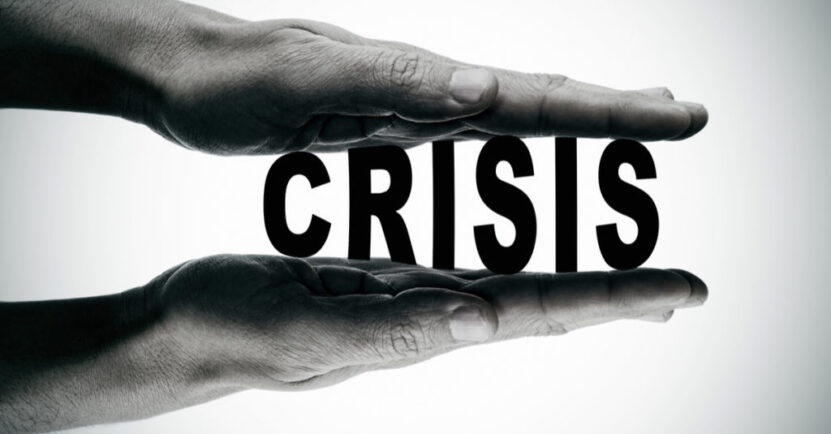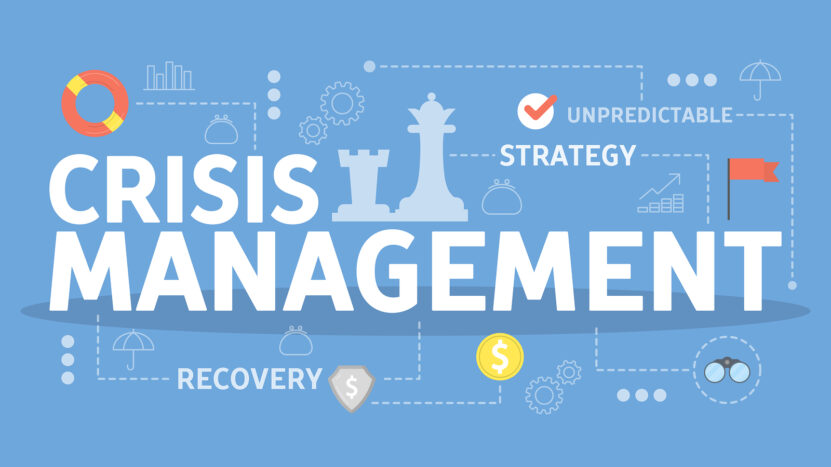Effective crisis management hinges on preparedness, and media training is a crucial component. Organizations excel in equipping leaders with the skills to communicate clearly and confidently during crises, ensuring that the right message reaches stakeholders. Their expertise shows that well-trained spokespeople can mitigate damage and preserve reputations.
In crisis situations, the media plays a pivotal role in shaping public perception. CT Group emphasizes this by offering tailored training that helps executives and staff navigate intense media scrutiny. By practicing real-world scenarios, participants learn how to handle tough questions and control the narrative.
Adopting best practices from CT Group’s methodology can significantly improve an organization’s crisis response. This includes ongoing media training, understanding the dynamics of different crises, and preparing clear communication strategies. These proactive steps can make the difference between preserving trust and facing significant reputation damage.
Understanding Crisis Management

Crisis management involves a systematic approach to identifying, managing, and mitigating crises to minimize negative impacts on an organization. Effective crisis management leverages preparation and communication strategies to address various types of emergencies.
Defining Crisis and Types
A crisis is an unexpected event that poses a significant threat to an organization’s operations, reputation, or financial stability. Crises can be categorized into several types including natural disasters, technological failures, human-induced incidents, and organizational crises.
Natural disasters include earthquakes, floods, and storms.
Technological failures cover system breakdowns and cyber-attacks.
Human-induced incidents range from terrorism to workplace violence.
Organizational crises involve issues like product recalls or financial scandals.
Each type demands specific strategies for prevention and response.
Role of Crisis Management
Crisis management is essential for quickly and efficiently addressing crises to prevent escalation. It involves coordinated efforts across various departments to control and mitigate the impact.
Key objectives include:
- Protecting stakeholders.
- Ensuring business continuity.
- Safeguarding reputation.
- Reducing financial losses.
Effective crisis management requires a dedicated team, clear communication, and rapid decision-making. Organizations must also evaluate their response to improve future crisis handling.
Key Components of Crisis Preparedness
Preparation is vital in crisis management to respond effectively. Key components include:
- Risk Assessment: Identifying potential crisis scenarios and their impacts.
- Crisis Communication Plan: Developing protocols for internal and external communication.
- Training and Drills: Regularly conducting crisis simulations and training sessions.
- Resource Allocation: Ensuring adequate resources, such as emergency kits and support teams.
Mitigation measures involve proactive steps like investing in robust IT infrastructure and establishing strong partnerships with emergency management agencies to enhance resilience.
Pre-crisis planning and ongoing training are crucial for minimizing damage and ensuring a swift recovery.
Media Training in Context

Media training is crucial in preparing spokespersons to effectively communicate during crises, focusing on developing skills, obtaining certifications, and engaging in self-assessment and continuous improvement.
Essence of Media Training
Media training is essential for enhancing a spokesperson’s verbal and nonverbal communication skills. Training involves mock interviews, message development, and techniques to stay composed under pressure. According to studies, approximately 70% of organizations conduct media training at least annually, emphasizing its importance in crisis preparation. This training ensures that spokespersons convey clear, concise, and accurate information, making them better equipped to handle challenging questions and high-stress situations.
Certification and Standards
Certification in media training provides a formal recognition of a spokesperson’s capabilities. Certification programs offer structured curricula focusing on message delivery, crisis communication tactics, and media engagement strategies. Adhering to established standards, these programs ensure that spokespersons meet the professional requirements for effective crisis communication. Organizations may prefer certified spokespersons as they adhere to industry best practices, enhancing credibility and trust during media interactions.
Self-Assessment and Continuous Improvement
Self-assessment plays a pivotal role in the ongoing improvement of media training skills. By regularly evaluating their performances, spokespersons can identify strengths and areas of improvement. Continuous learning can include attending advanced workshops, participating in refresher courses, and staying updated with current media trends and technologies. This proactive approach helps maintain high standards in crisis communication, ensuring spokespersons remain effective and reliable in their roles.
Media Engagement During a Crisis

Effective media engagement is crucial during a crisis. It ensures accurate information dissemination, manages stakeholder relations, and enables rapid decision-making to maintain public trust and organizational credibility.
Press Conferences and Public Statements
Press conferences play a pivotal role in crisis management. They provide a platform for delivering timely updates directly to the public and media. These events should be well-prepared, with key messages clearly outlined. Spokespersons must be trained to handle difficult questions and maintain a calm, authoritative demeanor.
Public statements should be precise and factual. Consistency in messaging helps prevent misinformation and reassures the public. Using multiple channels, including social media, enhances reach and ensures the message is accessible to a wider audience. A well-managed press conference can significantly influence public perception and response.
Stakeholder Relations
Maintaining strong stakeholder relations is essential during a crisis. Clear and open communication fosters trust and cooperation. Regular updates to stakeholders, including employees, customers, and partners, help in managing expectations and mitigating potential fallout.
Engaging stakeholders through multiple platforms, such as emails, meetings, and social media, ensures that everyone is informed and aligned with the crisis response strategy. Personalizing communication to address each stakeholder’s concerns demonstrates genuine care and can enhance loyalty and support.
Real-Time Decision Making
Speed is critical in crisis management. The ability to make informed decisions in real-time can significantly impact the outcome. Media teams must be equipped with the tools and processes to monitor developments and respond swiftly.
Implementing a real-time communication strategy allows for quick dissemination of information. This involves having pre-approved messages and a clear chain of command for approvals. Real-time decision making ensures the organization remains agile, responding appropriately to evolving situations and maintaining control over the narrative.
Leveraging Social and Traditional Media

In a crisis, effective communication uses both social and traditional media to disseminate information quickly and accurately. Each medium has unique advantages and considerations that must be strategically leveraged.
Newspapers, Radio, and Television
Traditional media such as newspapers, radio, and television remain vital during a crisis. Newspapers provide in-depth analysis and can reach an audience that prefers a tangible format. Radio is crucial for real-time updates, especially in areas where internet connectivity is limited. Television combines visual and audio elements to broadcast live events, offering an authoritative source of information. Each offers credibility and a broad audience reach, making them essential for official statements and detailed reports.
Facebook and Other Social Networks
Social media platforms, particularly Facebook, play a critical role in real-time communication during crises. Facebook’s wide user base allows organizations to post updates, share official statements, and engage directly with the public. Other platforms like Twitter and Instagram provide rapid dissemination and enable instant feedback and public sentiment analysis. These networks facilitate transparency and community engagement, allowing for quick corrections of misinformation and efficient two-way communication. Leveraging these tools ensures that messages are timely and relevant.
Balancing Speed and Accuracy
During crises, balancing the speed and accuracy of information is crucial. While social media allows for rapid dissemination of updates, it can also spread misinformation if not monitored closely. Traditional media tends to be slower but more reliable, offering verified information after thorough fact-checking. Combining the immediacy of social media with the rigor of traditional media can enhance credibility and maintain public trust. Ensuring accurate, timely updates requires a coordinated approach, utilizing each platform’s strengths to manage the flow of information effectively.
Response Tactics and Challenges

Effective media training for crisis management involves response strategies, navigating uncertainty with openness, and addressing legal and ethical matters. These elements ensure a comprehensive approach to handling a crisis.
Emergency Managers and Response Teams
Emergency managers play a crucial role in coordinating crisis responses. Teams must be well-prepared through regular training and simulations. Emphasis on clear communication channels assures rapid information flow. A pre-determined crisis communication plan helps streamline efforts, reducing confusion during high-stakes situations.
Teams need to be diverse, covering various expertise areas to handle different crisis aspects. Real-time decision-making capabilities are essential to adjust tactics swiftly as the crisis evolves. This includes understanding the media landscape to utilize both traditional and social media effectively.
Navigating Uncertainty and Openness
Uncertainty is inherent in crises. Effective response involves transparent communication to maintain public trust. Teams should provide timely updates, even if all information is not available, to avoid speculation and misinformation.
Encouraging openness with stakeholders helps manage expectations and fosters cooperative problem-solving. Responding quickly to queries and correcting misinformation is critical. Consistent and honest communication mitigates fear and builds credibility, aligning with the principles found here about social media in crisis management.
Legal and Ethical Considerations
Legal and ethical constraints must guide crisis responses. Understanding relevant regulations and compliance requirements is vital to avoid legal repercussions. Crisis teams should consult legal experts when crafting public statements to ensure accuracy and protect the organization.
Ethical considerations involve honesty and integrity in communication. Misleading the public or withholding critical information can lead to severe consequences. Ethical behavior fosters long-term trust and reinforces the organization’s reputation.
CT Group’s best practices include legal briefings as part of media training, emphasizing the importance of adhering to both legal and ethical standards. This approach ensures that responses are not only effective but also compliant with legal and moral standards.
Analyzing Case Studies

Examining case studies offers valuable insights into successful crisis management practices and highlights important lessons from empirical research. These cases demonstrate effective use of media training in various crisis scenarios.
Successful Crisis Management Examples
The disaster response to Hurricane Harvey in 2017 is a prime example of effective media training and crisis communication. Authorities utilized social media to provide real-time updates, coordinate rescue operations, and distribute critical information. This approach demonstrated the importance of rapid, transparent communication.
Another notable case involves the Tylenol poisonings in the 1980s. Johnson & Johnson’s swift action, including transparent communication and product recalls, is often cited as a textbook example of crisis management. Their media-trained executives effectively conveyed empathy and responsibility, restoring public trust.
In both instances, well-prepared media strategies were crucial. These examples highlight the impact of trained spokespersons in delivering clear, consistent messages during crises.
Lessons Learned and Empirical Research
Research on crisis communication has identified several best practices for media training. Studies emphasize the need for consistency in messaging across all platforms. Maintaining a calm, authoritative tone ensures public trust and compliance during emergencies.
Empirical research also underscores the significance of empathy in crisis communication. Analyzing public response to various crises reveals that audiences prefer messages that show concern and understanding. This approach helps mitigate panic and misinformation.
Additionally, case studies show that ongoing media training enhances crisis management. Regular drills and scenario planning enable teams to respond more effectively when real crises occur.
These insights collectively underscore the importance of continuous improvement and adaptation in media training programs.
Developing a Proactive Media Strategy

A proactive media strategy in crisis management focuses on preparing and training key personnel to handle media effectively. It ensures organizations can respond swiftly and maintain a positive reputation during crises.
Training and Preparation
Training key spokespersons is crucial. Media training provides them with the skills to communicate clearly and effectively. This includes handling tough questions, maintaining composure under pressure, and staying on message.
Regular drills and role-playing sessions help individuals practice real-life scenarios. These exercises should mimic potential crises to ensure preparedness. Training must be updated regularly to adapt to evolving media landscapes.
Fostering team coordination ensures a unified response. Clear guidelines on who communicates what and when are essential. Implementing protocols for rapid information dissemination helps maintain control over the narrative.
Incorporating digital media training is important. This includes managing social media platforms and responding to online inquiries. Training should cover both traditional and digital media to ensure comprehensive preparedness.
Adopting these strategies ensures a robust approach to media interactions, protecting the organization’s reputation and enabling effective crisis management. For further reading on integrating media training, refer to expert media training.
Conclusion
Effective media training is crucial for crisis management.
Creating a robust communication strategy helps manage media coverage during crises. Outlets and broadcast media play a pivotal role in shaping public perception.
CT Group emphasizes the importance of mass communication techniques. They recommend continuous training sessions for key spokespersons to handle pressure and broadcast messages accurately.
Understanding the dynamics of media relations is essential.
Organizations should establish relationships with key media outlets before any crisis occurs. This ensures better cooperation and understanding when managing a crisis.
Incorporating these practices can significantly improve an organization’s crisis response. It helps maintain trust and minimizes potential damage. Properly trained media personnel are better equipped to convey clear, concise, and accurate information.
Investing in media training and understanding its critical role can fortify an organization’s crisis management framework.

